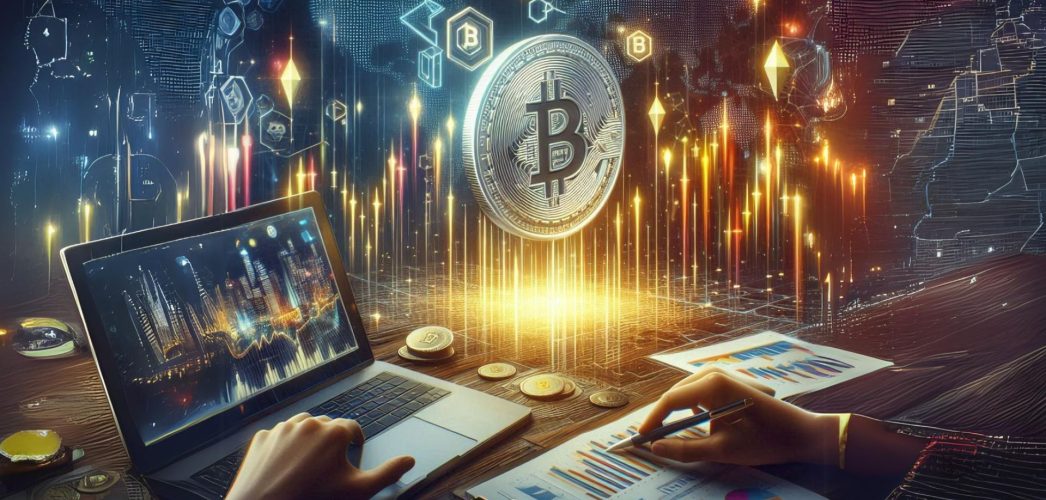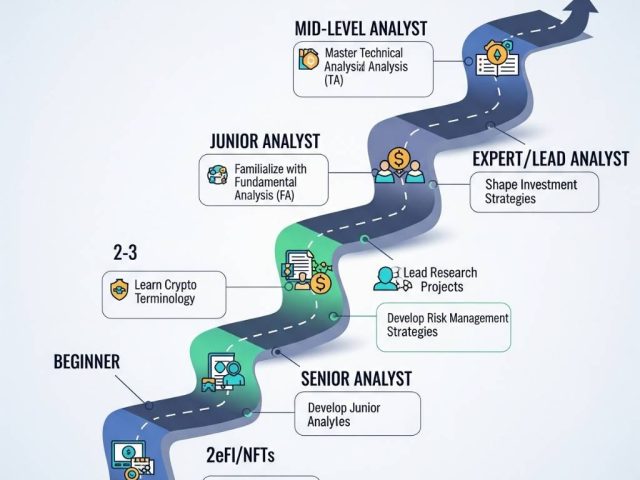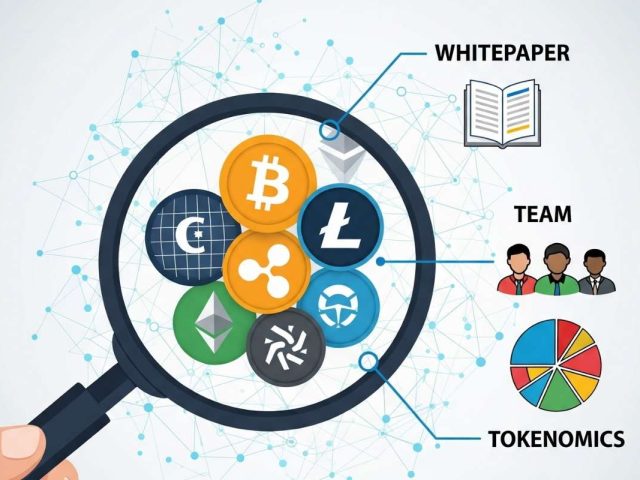In the ever-evolving world of cryptocurrencies, where innovation and speculation intertwine, it is crucial to understand the underlying economic models that drive the value and sustainability of these digital assets. This is where the concept of “tokenomics” comes into play.
Tokenomics, a portmanteau of “token” and “economics,” refers to the study of the economic principles governing the creation, distribution, and utilization of tokens within a blockchain project. It encompasses a wide range of factors, including token supply, distribution mechanisms, utility, and governance structures.
“In the realm of cryptocurrency, understanding tokenomics is akin to deciphering the DNA of a project. It reveals its inherent strengths, potential weaknesses, and long-term viability.”
The Importance of Tokenomics
Tokenomics serves as the backbone of any cryptocurrency project. It outlines the rules of engagement, incentivizes desired behaviors, and establishes a sustainable economic ecosystem. By understanding tokenomics, investors can make informed decisions, developers can design robust systems, and users can actively participate in the network’s growth.
“Tokenomics is not just about numbers and charts; it’s about creating a vibrant community where participants are aligned and motivated to contribute to the project’s success.”
Key Elements of Tokenomics
Let’s delve into the key elements that constitute tokenomics:
-
Token Supply: This refers to the total number of tokens that will ever be created. It can be fixed or variable, depending on the project’s design.
-
Token Distribution: This outlines how tokens are allocated to different stakeholders, such as founders, investors, developers, and the community. A fair and transparent distribution mechanism is crucial for building trust and ensuring long-term sustainability.
-
Token Utility: This defines the specific use cases or purposes of the token within the project’s ecosystem. It could be used for accessing services, paying transaction fees, participating in governance, or earning rewards.
-
Token Burning: This involves permanently removing a portion of the token supply from circulation. It can be used to create scarcity, increase the value of remaining tokens, or maintain stability in the system.
-
Token Governance: This refers to the decision-making processes within the project. Token holders may have voting rights on proposals related to protocol upgrades, development initiatives, or treasury management.
“A well-designed tokenomics model strikes a delicate balance between incentivizing participation, maintaining scarcity, and ensuring long-term sustainability.”
Types of Token Economic Models
Tokenomics encompasses a variety of economic models, each with its own unique characteristics and implications. Let’s explore some of the most common ones:
-
Inflationary Models: In inflationary models, the token supply increases over time. This can be achieved through block rewards, staking mechanisms, or other forms of issuance. Inflationary models are often used to incentivize network participation and security. However, if not carefully managed, they can lead to dilution and devaluation of existing tokens.
-
Deflationary Models: In deflationary models, the token supply decreases over time. This can be achieved through token burning mechanisms, where a portion of tokens is permanently removed from circulation. Deflationary models aim to create scarcity and increase the value of remaining tokens. However, if the deflationary pressure is too strong, it can hinder adoption and liquidity.
-
Hybrid Models: Hybrid models combine elements of both inflationary and deflationary models. They aim to strike a balance between incentivizing participation and maintaining scarcity. For example, a project may have a fixed maximum supply but also implement a token burning mechanism to offset inflation caused by block rewards.
“The choice of token economic model depends on the project’s specific goals, use cases, and target audience. There is no one-size-fits-all solution, and careful consideration is required to design a sustainable and effective model.”
Analyzing Tokenomics
When evaluating a cryptocurrency project, it’s essential to conduct a thorough analysis of its tokenomics. Here are some key factors to consider:
-
Token Distribution: Assess the fairness and transparency of the token distribution mechanism. Look for projects that prioritize decentralization and avoid excessive concentration of tokens in the hands of a few entities.
-
Token Utility: Evaluate the real-world use cases and value proposition of the token. A token with strong utility and demand is more likely to maintain its value and drive adoption.
-
Market Dynamics: Consider the overall market conditions and sentiment surrounding the project. Factors such as trading volume, liquidity, and community engagement can significantly impact the token’s price and future potential.
-
Team and Roadmap: Research the team behind the project and their track record. A strong and experienced team with a clear roadmap and vision is crucial for long-term success.
“Analyzing tokenomics requires a combination of quantitative and qualitative assessment. It’s essential to look beyond the numbers and consider the project’s overall narrative, community support, and potential impact.”
Several tools and resources can aid in analyzing tokenomics, including blockchain explorers, data analytics platforms, and community forums. These tools provide valuable insights into token supply, distribution, transaction history, and other relevant metrics.
Real-World Examples
Let’s explore some real-world examples of tokenomics in action:
-
Bitcoin: Bitcoin, the pioneering cryptocurrency, operates on a deflationary model with a fixed maximum supply of 21 million coins. Its tokenomics are designed to create scarcity and incentivize long-term holding. The block reward, which miners receive for validating transactions, halves approximately every four years, further reducing the rate of new coin issuance.
-
Ethereum: Ethereum, a leading smart contract platform, initially adopted an inflationary model with no maximum supply cap. However, recent upgrades, such as the London hard fork, have introduced a burn mechanism that destroys a portion of transaction fees. This aims to create a more balanced and sustainable economic model for Ethereum.
-
Other Projects: Numerous other projects have implemented innovative tokenomics models tailored to their specific use cases. For example, some projects utilize a dual-token system, where one token represents ownership or governance rights, while the other serves as a utility token within the ecosystem.
“Real-world examples demonstrate the diversity and adaptability of tokenomics. Each project strives to create an economic model that aligns with its vision, incentivizes participation, and fosters long-term sustainability.”
The Future of Tokenomics
As the blockchain industry continues to evolve, we can expect to see further advancements and innovations in tokenomics. Some emerging trends and predictions include:
-
Increased Focus on Sustainability: Projects will increasingly prioritize sustainable tokenomics models that promote long-term value creation and avoid excessive inflation or deflation.
-
Integration of DeFi and NFTs: Tokenomics will play a crucial role in the integration of decentralized finance (DeFi) and non-fungible tokens (NFTs), enabling new forms of value exchange and ownership.
-
Enhanced Governance Mechanisms: Token holders will have greater influence and control over project decisions through advanced governance mechanisms, such as quadratic voting and delegated voting.
“The future of tokenomics holds immense potential for innovation and disruption. As the industry matures, we can expect to see more sophisticated and nuanced economic models that drive adoption, create value, and empower communities.”
However, several challenges and opportunities lie ahead:
-
Regulatory Uncertainty: The evolving regulatory landscape poses challenges for tokenomics design and implementation. Projects need to ensure compliance while maintaining their core principles.
-
Scalability and Interoperability: As blockchain networks grow, scalability and interoperability become critical considerations. Tokenomics models need to adapt to accommodate increasing transaction volumes and cross-chain interactions.
-
Community Engagement: Building and maintaining a vibrant community is essential for the success of any blockchain project. Tokenomics can play a crucial role in fostering community participation and ownership.
“The future of tokenomics is not without its hurdles. However, by addressing these challenges and embracing opportunities, we can unlock the full potential of blockchain technology and create a more equitable and decentralized future.”
Conclusion
In conclusion, tokenomics serves as the economic foundation of cryptocurrency projects. It encompasses a wide range of factors, including token supply, distribution, utility, and governance. By understanding tokenomics, investors can make informed decisions, developers can design robust systems, and users can actively participate in the network’s growth.
As the blockchain industry continues to evolve, we can expect to see further advancements and innovations in tokenomics. The future holds immense potential for creating more sustainable, inclusive, and decentralized economic models that empower communities and drive innovation.
FAQs
What is the difference between tokenomics and economics?
Tokenomics is a specialized field within economics that focuses on the economic principles and models specific to cryptocurrencies and blockchain projects. While traditional economics deals with the production, distribution, and consumption of goods and services, tokenomics examines the creation, distribution, and utilization of tokens within a decentralized network.
How can I analyze the tokenomics of a project?
To analyze the tokenomics of a project, consider factors such as token supply, distribution, utility, market dynamics, team, and roadmap. Utilize tools like blockchain explorers and data analytics platforms to gain insights into token metrics.
Are all cryptocurrencies inflationary?
No, not all cryptocurrencies are inflationary. While many projects adopt inflationary models to incentivize participation, others implement deflationary or hybrid models to control token supply and maintain value.
Can tokenomics change over time?
Yes, tokenomics can evolve over time. Projects may implement changes to their economic models through protocol upgrades, hard forks, or community governance decisions.
What is the role of tokenomics in DeFi and NFTs?
Tokenomics plays a crucial role in the integration of decentralized finance (DeFi) and non-fungible tokens (NFTs). It enables the creation of new financial instruments, incentivizes liquidity provision, and facilitates the ownership and exchange of unique digital assets.
Scentia Research Group: Empowering Blockchain Projects
At Scentia, we are passionate about helping blockchain projects succeed. We use our expertise in qualitative research technologies to identify and fix problems that could derail your project. Our team of lawyers, data scientists, and engineers has a deep understanding of the blockchain landscape, and we are committed to providing our clients with the insights they need to make informed decisions.
We believe that every blockchain project deserves a fair chance to succeed. That’s why we offer a free initial consultation to assess your project’s needs and challenges. Our team will work with you to develop a customized research plan that addresses your specific concerns.
Don’t let tokenomics be the stumbling block to your project’s success. Contact Scentia today and let us help you build a sustainable and thriving blockchain ecosystem.





